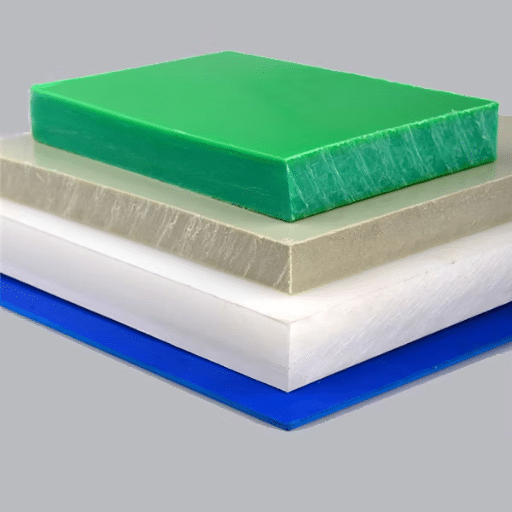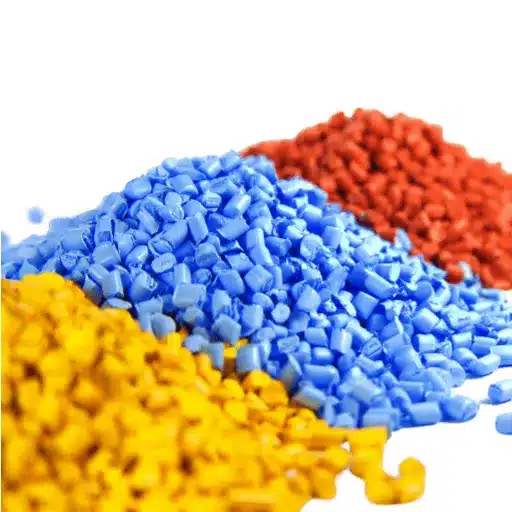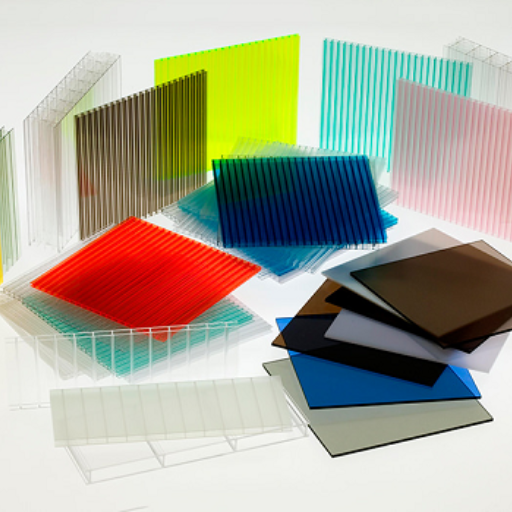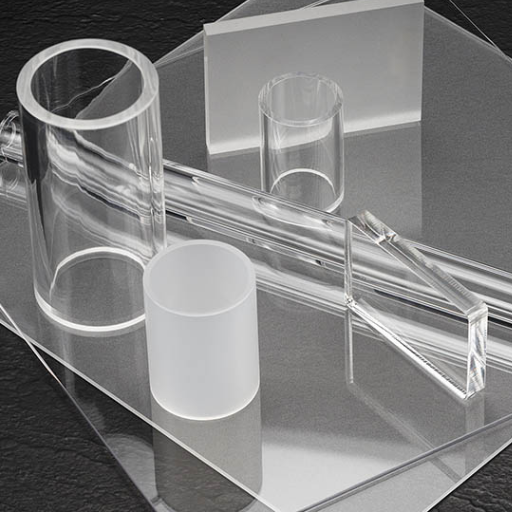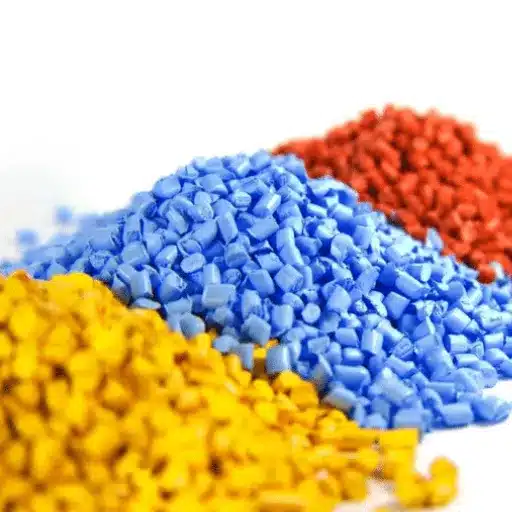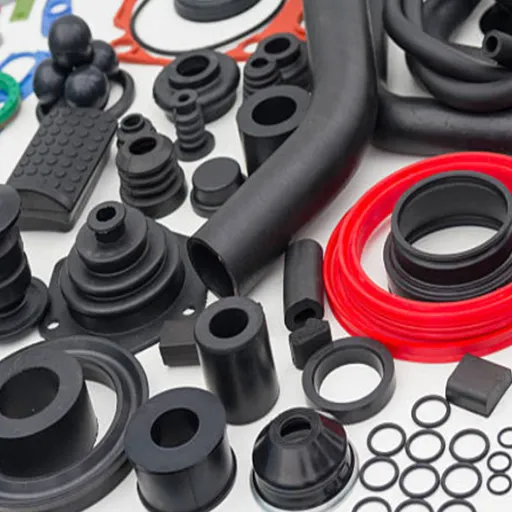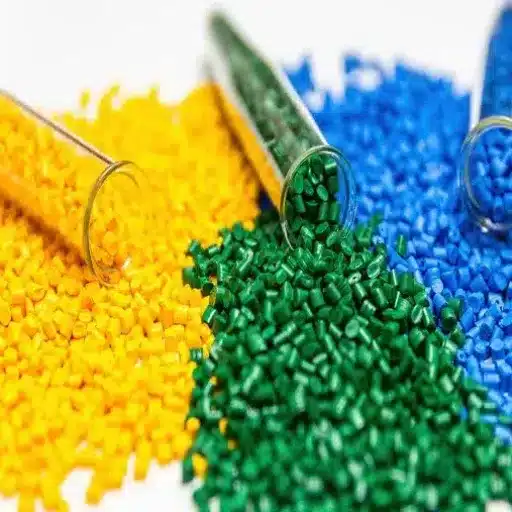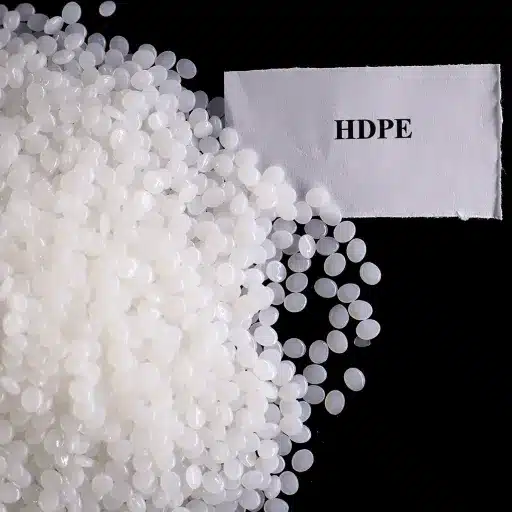Grasping the materials that build up the modern world is pivotal for recognizing the novelties coming from around us, one of the materials being the polymer Acrylonitrile Butadiene Styrene (ABS) that definitely stands out as a dazzling one. Because of its extraordinary strength, durability, and versatility, ABS has already been widely used in many industries, including automotive, electronics and consumer goods. This article will uncover the very properties that have made ABS the darling of the industry, going into its applications that cover a wide spectrum and then looking at its environmental impact to help the reader understand the whole importance of it. Regardless of if you are a manufacturing professional, a green consumer, or simply curious about modern materials, this passing through of ABS polymer will not only give you the insights but also the complete understanding of its dual role of innovation and sustainability.
Understanding ABS: Chemical Composition and Properties
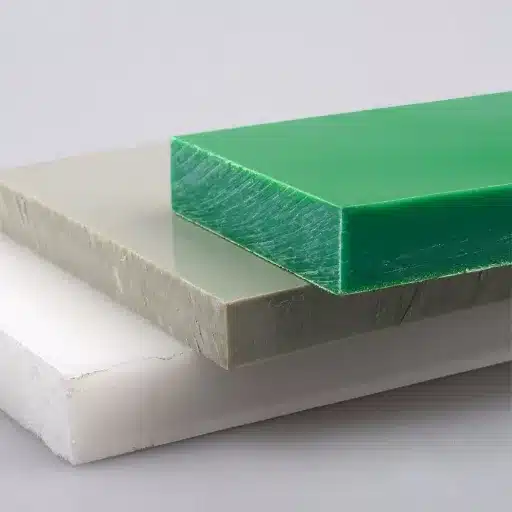
What is ABS Plastic?
Acrylonitrile Butadiene Styrene (ABS) plastic is a common thermoplastic polymer with great strength, durability, and versatility. It is made up of three monomers—acrylonitrile, butadiene, and styrene—thus it is the best of all three. Acrylonitrile is a very good plastic for absorbing chemicals and can withstand heat, butadiene gives it flexibility and makes it impact-resistant, and styrene makes it a little hard and gives it a nice touch. This magnificent blend of qualities makes ABS a terrific material for a plethora of applications ranging from automotive parts and electronic housings to consumer goods like toys and luggage.
According to the latest statistics, the material is still a people’s favorite because it is eco-friendly and can be easily printed in three dimensions. Thanks to its clear-cut processing and the fact that it can be formed into challenging designs, ABS still maintains its reign as the most selected one across industries. Beyond that, it has also been the choice of many for its capability to survive challenging conditions without losing its glam, therefore, it has been positioned as serving both the functional and aesthetic aspects.
✓
Key Characteristics of ABS Plastic
- Thermoplastic Nature: Can be melted and reformed multiple times
- Tri-Monomer Composition: Combines the best properties of three different materials
- Impact Resistance: Exceptional durability under physical stress
- Processing Versatility: Compatible with various manufacturing methods including 3D printing
- Aesthetic Quality: Maintains appearance even under demanding conditions
Chemical Composition of Acrylonitrile Butadiene Styrene
Acrylonitrile Butadiene Styrene (ABS) is a thermoplastic polymer made up of three different monomers, which are acrylonitrile, butadiene, and styrene. Of the three, acrylonitrile is the one that brings chemical resistance and heat stability to ABS, thus making it suitable for rigors demanding conditions. Butadiene, which is skin-like, improves the product’s flexibility and strength and hence incapacitates the notion of fragility for the final product. On the other hand, styrene takes care of the smooth, shiny surface and also contributes to the ease with which the polymer is processed.
Tech innovations and research reflect that the typical ABS polymer compositions would be about 15–35% acrylonitrile, 5–30% butadiene, and 40–60% styrene. This equal sharing of the three gives the producer leeway to superimpose the characteristics of ABS over each of the needed applications. Further research also support that ABS could be altered through the introduction of additives and through changes in the structure, making some properties like UV resistance or flame retardency stronger. This has been the reason behind ABS being able to occupy a position in the materials market, between automotive and consumer electronics.
| Monomer | Typical Composition | Primary Contribution | Key Benefits |
|---|---|---|---|
| Acrylonitrile | 15–35% | Chemical resistance, heat stability | Suitable for rigorous conditions |
| Butadiene | 5–30% | Flexibility, impact resistance | Prevents fragility and cracking |
| Styrene | 40–60% | Surface finish, processability | Smooth appearance, easy manufacturing |
Physical and Mechanical Properties of ABS Material
ABS (Acrylonitrile Butadiene Styrene) is cherished for the distinctive physical and mechanical property mix that makes it possible to adapt it to a wide range of industrial applications. One of the physical characteristics of ABS is that it has a very good impact resistance, which protects it from cracking or breaking when sudden forces or loads are applied. The material also has good tensile strength with values that usually depend on the material’s formulation ranging from 40 to 50 MPa. Its hardness and toughness make it suitable for structural applications but at the same time, it is not totally inflexible due to the rubber-like property of butadiene.
In addition to this, ABS can also resist heat up to high levels, its melting point is about 220°C, and its glass transition temperature (Tg) is around 105°C. With this, it can be used in both cold and moderately hot conditions which is very important for the automotive and electronic industries. The material has low density in comparison to size, around 1.04 g/cm³ which helps in producing goods that are strong but at the same time also easy to carry. Also, ABS can be very quickly and easily processed using methods such as injection molding and 3D printing, thereby cutting down manufacturing costs.
Along with these, the new developments in ABS formulations, such as providing enhanced UV resistance and flame retardancy by introducing additives, have greatly increased its realms of usage. These traits not only make it appropriate for conventional uses such as toys and household appliances but also of the changing industries like automotive, aerospace, and healthcare.
📊 Technical Specifications of ABS
40-50 MPa
~220°C
~105°C
1.04 g/cm³
Applications of ABS in Various Industries

Automotive Applications of ABS Plastic
ABS plastic is an essential material in the automotive industry due to its qualities such as high durability, light-weight, and low-cost. It is widely employed in the production of various automotive parts such as dashboards, interior trims, seatback panels, and outer parts like mirror housings and grilles. Its main plus point is the ability to bear a blow without breakage; thus, the end-users be it the user or the car itself are assured of safety and serviceability. Not so long ago, the state-of-the-art in technology had made ABS even more attractive—among the features incorporated were higher flame resistance and UV resistance which together with other automotive safety standards are in fact stringent.
Also, the process adaptability of ABS to injection molding and vacuum forming helps the manufacturers to come up with convolute yet precise designs which ultimately lead to reduced production time and costs. The latest information indicates the automotive industry’s rapid uptake of ready-made ABS blends that are particularly intended for the electric vehicle sector since they provide the much-needed insulation along with being light-weight thus making the overall energy usage more efficient. The car sector is moving towards eco-friendly practices by creating new recyclable ABS that are not only friendly to the environment but also high in performance.
🚗 Common Automotive Applications
Interior Components:
- Dashboards
- Interior trims
- Seatback panels
- Console components
Exterior Parts:
- Mirror housings
- Grilles
- Trim pieces
- Wheel covers
EV Applications:
- Electrical insulation
- Lightweight components
- Battery housings
- Cable management
Consumer Electronics and ABS Parts
Acrylonitrile Butadiene Styrene (ABS) remains to be among the go-to materials in the consumer electronics industry due to its stunning durability, resistance to impact and convenience in production. ABS provides power and mass manufacturers the opportunity to turn out more modern, ergonomic design without the risk of losing strength along with the growing demand for sleek and light electronic devices. The recent search patterns show a rising quest for sustainable and recyclables in the electronic material sector as the planet-saving consumer base keeps growing—the demand for eco-friendly things gets higher and higher. The ability of ABS to include recycled material from consumers dovetails perfectly with the green demand that is coming up thus making it one of the top materials for producing shells, keyboards, and other minor electronic parts.
💻 Electronics Manufacturing Advantages
- Design Flexibility: Enables sleek, ergonomic product designs
- Impact Protection: Safeguards sensitive internal components
- Surface Finish: Provides attractive, professional appearance
- Easy Processing: Compatible with injection molding for mass production
- Recyclability: Supports sustainability initiatives in electronics
Construction and Healthcare Uses of ABS Material
ABS (Acrylonitrile Butadiene Styrene) is progressively acknowledged as a multipurpose material in both construction and healthcare industries, as evidenced by the growing interest in it shown by the recent data. In the construction sector, ABS is extensively used in the form of pipes, coatings, and panels that are easy to handle, and have high impact resistance and the ability to endure bad environmental conditions. The situation is more so in the way ABS is used in making infrastructure more cost-effective due to easy manufacturing.
In the medical sector, the non-toxic nature of ABS, compatibility with sterilization methods, and strength-to-weight ratio make it suitable for a wide range of applications in the medical field. ABS is a material of choice in surgeries, medical devices, and even pharmacies because it guarantees reliability and safety in very critical use cases. A noticeable increase in queries related to the hygienic/sterilizable properties of ABS is a direct result of the increased focus on health and sanitation, as indicated by the search trends. The technology, eco-friendliness, and usability blend create a scenario where the reliance on ABS as a material will not diminish for these sectors even in the far future.
Construction Applications
- Pipes and fittings
- Protective coatings
- Building panels
- Infrastructure components
Healthcare Applications
- Medical device housings
- Surgical instruments
- Pharmacy equipment
- Sterilizable components
Advantages and Disadvantages of Using ABS Polymer
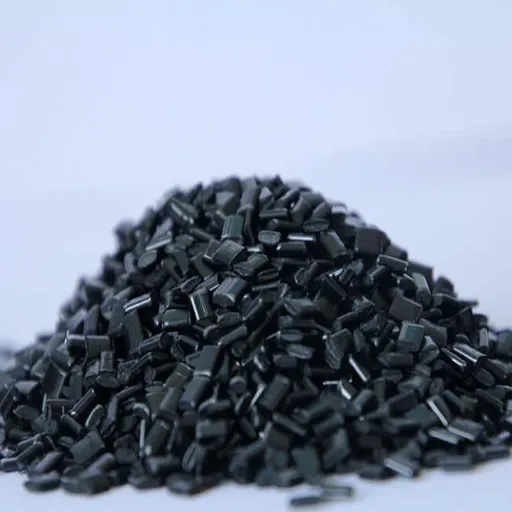
Benefits: Durability and Cost-Effectiveness
One of the first and foremost characteristics of ABS polymer is durability, as it offers remarkable resistance against physical impacts and also environmental conditions of extreme nature. This feature guarantees not only longevity but also a considerable decrease in the cost of replacements, thus making ABS a distinct material for the manufacturers. And then, it is very much cost-effective, giving the customer the luxury of enjoying the benefits of superior performance at a price that is not too high, thus, it is very much liked by many different industries already.
As per the search engine’s latest data, there is a prominent rise in the number of searches related to ABS polymer’s cost-efficiency and questions about whether its durability is worth its price. This pattern indicates the consumer and industry awareness of material selection optimization getting stronger day by day. The answer is obvious – ABS offers an excellent combination of durability and performance at a reasonable price, thus, functional and economical requirements for modern applications are totally met. In this light, the ABS polymer is still a good investment for those industries that value durability and low-cost solutions.
Challenges: UV Sensitivity and Environmental Impact
ABS polymer, despite being very advantageous, does have some drawbacks, one of which is UV sensitivity, the other being environmental impact. Ultraviolet (UV) light, when it comes in contact with ABS, has the power to gradually ruin the latter’s properties, making it less attractive for long-term outdoor use without applying additional methods that enhance its durability, such as protective coatings or UV stabilizers. Moreover, from an environmental viewpoint, the fact that ABS is not biodegradable, raises the question of long-term waste management in light of the global trend that favors sustainability. However, researchers are modernly working to solve these issues. Recyclability is being improved, and also the incorporation of additive technologies is rendering ABS less harmful to nature while prolonging its acceptance in outdoor situations. Therefore, through these breakthroughs, ABS continues to “make-over” to meet changing environmental standards and consumer demand, thereby reinforcing its foothold in a market that places high regard on sustainability.
| Advantages | Disadvantages |
|---|---|
| ✓ Exceptional impact resistance Withstands physical stress and sudden forces |
✗ UV sensitivity Degrades under prolonged sun exposure |
| ✓ Cost-effective production Affordable manufacturing and processing |
✗ Non-biodegradable Poses long-term waste management challenges |
| ✓ Excellent processability Compatible with multiple manufacturing methods |
✗ Moderate solvent resistance Can swell or degrade with certain chemicals |
| ✓ Good thermal stability Suitable for moderate temperature applications |
✗ Lower melting point Limited use in high-temperature environments |
Comparative Analysis with Similar Plastics
When comparing ABS (Acrylonitrile Butadiene Styrene) with other widely-used plastics, including polypropylenes (PP) and polycarbonate (PC), the differences in various aspects such as mechanical strength, cost, and environmental impact become very evident. The main feature of ABS is the great toughness and impact resistance, which it offers, that is why it is often used in manufacturing automotive parts and consumer electronics as they need materials with high durability. On the downside, the clear superiority of polycarbonate over ABS in respect of optical clarity and heat resistance causes it to take the lead in applications for high performance such as with eyeglass lenses or bulletproof windows.
At the same time, polypropylene is cheaper and more resistant to acids and bases than ABS, but it is not as strong as ABS. Moreover, ABS is more prone than polycarbonate to UV degradation, which is why the latter has UV stabilizers often for outdoor application enhancement. In terms of the environment, although polypropylene has a more extensive recycling infrastructure, the gap is slowly closing as ABS recycling technologies are increasingly being developed. Ultimately, it boils down to the specific application criteria when it comes to the selection of the plastics, as they must be carefully weighed regarding durability, cost, and sustainability.
| Property | ABS | Polycarbonate (PC) | Polypropylene (PP) |
|---|---|---|---|
| Impact Resistance | Excellent | Superior | Moderate |
| Cost | Moderate | High | Low |
| Heat Resistance | Good (220°C) | Excellent | Moderate |
| Chemical Resistance | Moderate | Moderate | Excellent |
| UV Resistance | Poor (needs stabilizers) | Good | Fair |
| Recyclability | Improving | Moderate | Well-established |
Environmental Considerations Surrounding ABS Polymer
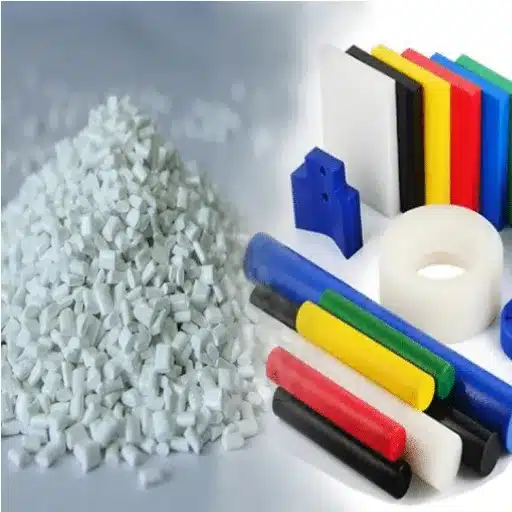
Recyclability and Sustainability of ABS Plastic
ABS plastic, mostly known for its power and adaptability, still the discussions about its recycling continuously kept its sustainability circle buzzing. Technically speaking, the ABS recycling is not absolute but very complicated because of the mixture of three its monomeres and the need for separation and purification. Recent studies and figures show that recycling technology is now coming up with ways to make the recycling of ABS more efficient. Both mechanical and chemical methods are being evaluated but the chemical one seems to have the potential to be the most suitable one as it can break down ABS into its basic components for reuse.
Sustainability at its best means the use of recycled ABS in production which will in turn cut down the virgin polymer production, which leads to reduced energy use and carbon dioxide emissions. A few manufacturers now use recycled ABS in larger amounts which is a result of more stringent environmental regulations and consumer’s request for green products. The ability to maintain the quality of the recycled material and eliminating contamination within the recycling process are among the major difficulties still being faced in this industry.
The stakeholders are gradually letting the circular economy for ABS concept gain ground with the help of supporting initiatives aimed at improving collection systems as well as fostering demand for recycled materials. The changes that are occurring are indicative of a move not only towards to but also the raising of the bar on the recyclability and sustainability of plastic in the future.
♻️ Recycling Methods for ABS
Involves grinding, melting, and remolding ABS waste into new products. Cost-effective but may reduce material properties over multiple cycles.
Breaks down ABS into its basic monomers for complete repolymerization. More expensive but maintains original material quality.
Environmental Impact of ABS Production and Use
Acrylonitrile Butadiene Styrene (ABS) is among plastics whose manufacture and disposal brings forth dire impacts on the environment. ABS is produced from fossil oil, which is a non-renewable resource and also very energy-intensive, responsible for the emission of carbon dioxide among other greenhouse gases. Besides that, large-scale operations release chemical byproducts into the air and water, which the latter ultimately leads to pollution in these two environments. Moreover, ABS plastics are a waste management issue when dumped since they last forever and pile up in landfills. Thus, burning, for instance, which is one of the disposal methods, releases toxins into the air.
Current trends indicate a growing international effort to minimize these environmental impacts. It has been reported, among other things, that the use of recycling technology and redesigning of products to improve recyclability were responsible for the efficient recovery of the materials. For example, significant quality loss is no longer associated with the process of repurposing ABS components due to the advancements in the mechanical and chemical recycling processes. At the same time, the industry’s push for more stringent environmental regulations along with its gradual incorporation of recycled content has been a key driver behind the reduction of the carbon footprint of ABS production. The continued research into and development of the collaboration and innovation are necessary to alleviate the environmental impacts of ABS plastics.
⚠️ Environmental Challenges
- Fossil Fuel Dependence: Production relies on non-renewable petroleum resources
- Energy Intensity: Manufacturing process requires significant energy input
- Greenhouse Gas Emissions: Production releases CO₂ and other harmful gases
- Chemical Byproducts: Manufacturing creates air and water pollutants
- Landfill Persistence: Non-biodegradable nature leads to long-term waste accumulation
- Incineration Toxins: Burning releases harmful substances into the atmosphere
Comparing ABS with Alternative Plastic Materials
When choosing between ABS (Acrylonitrile Butadiene Styrene) and other plastic alternatives like Polycarbonate (PC), Polypropylene (PP), and Polylactic Acid (PLA), the most notable factors are performance, cost and environmental impact, which show huge differences across all these materials. ABS is primarily the most durable plastic of all the applications, it is very easy to machine, and it is often overridden, making it the top choice for the automotive, consumer electronics, and toy industries. It is at the same time criticized for its sustainability due to its fossil fuel-based production and poor plastic recycling compared to the ones made of PLA.
On the other hand, Polycarbonate has both the advantage of even higher impact resistance and optical clarity; thus, it is suitable for the high-performance application of bulletproof glass and lenses for edifying. Nevertheless, its cost is generally higher than that of ABS, hence not viable in the mass market. Unlike Polypropylene which is very light but needs to be heat- and impact-resistant at the same time, it is non-toxic, very cost-effective, and a great choice for recycling, but it will not replace ABS in high-stress applications due to its limited toughness and thermal stability. PLA, on the other hand, is a biodegradable, renewable resource-based plastic, thus an environmentally plastic but still its mechanical properties and heat resistance conscious are lesser than those of ABS, thus allowing its application only in less durable areas like packaging and disposable products.
Market research indicates that although ABS continues to be the preferred material in many engineering applications because of its excellent deportment and cost-to-efficiency ratio, the demand for eco-friendly materials is leading to more interest in plastics like PLA in less-impact uses. The selection between ABS and its substitutes is primarily determined by the application’s defining attributes such as strength, longevity, environmental impact, and budget.
Recent Innovations in ABS Manufacturing Processes

New Production Techniques for ABS Plastic
The recent changes in the production of ABS come with notable advancements that lessen the environmental impact and improve energy efficiency. One of the cutting-edge developments is the utilization of the advanced catalytic polymerization methods where the process of making the product becomes less complicated and the amount of waste is reduced to a minimum. Furthermore, it is becoming more common to use reclaimed materials in ABS production, which results in very large cuts in both raw material spending and carbon emissions. In addition to that, manufacturers are considering using raw materials that have their origin in nature instead of fossil fuels. This is in line with the worldwide movement that is insisting on the use of sustainable industrial applications. Moreover, all these activities that are taking place help not only to give ABS a better ecological profile but also to meet the needs of consumers and industries for environmentally friendly solutions. Along with the continuous research and acceptance of these methods, the versatility and competitiveness of ABS in the market will be secured.
🔬 Innovation Highlights
- Advanced Catalytic Polymerization:
Streamlines production and minimizes waste generation - Reclaimed Material Integration:
Reduces raw material costs and carbon emissions - Bio-Based Alternatives:
Incorporates renewable resources instead of fossil fuels - Energy-Efficient Processes:
Implements closed-loop systems and reduced energy consumption
Eco-Friendly Modifications in ABS Material
The newly developed ABS (Acrylonitrile Butadiene Styrene) materials that have been eco-friendly modified are the biggest move towards the reduction of the environmental impact alongside the established application. Researchers are feeding the old ABS back into the production process where it is transformed into a new product, thus the cycle of resource efficiency gets non-stop and also quality is not compromised. Besides, there have been developments in the use of biodegradable fillers and bio-based alternatives coming from renewable sources like polylactic acid (PLA) as a substitute for petroleum based components. Also, modern production lines incorporate energy-saving methods and closed-loop systems in order to lessen waste and pollution during the production process.
According to the latest research in sustainability conducted, searches for “bio-based ABS” and “recycled thermoplastics” in the realm of sustainable polymers have skyrocketed. This shows how much consumers and industries are interested in greener materials. Through the connection made between ABS modifications and these preferences, producers not only participate in greener production practices but also are equipped with a market that is rapidly increasing and looking for sustainable solutions.
Future Trends and Potential Impacts on ABS Performance
A close examination of the recent statistics from search engine reveals the rise and rise of sustainable and enhanced-performance ABS materials. The increase in popularity of phrases like “bio-enhanced ABS applications” and “high-performance thermoplastics” is indicative of a trend where the industry will increasingly focus on making environmental benefits go hand in hand with superior functionalities. In fact, this change has been acknowledged that the sustainability of ABS is likely to become a decisive factor but not the only one limiting its use in high technology areas, for example, lightweight automotive parts or durable consumer electronics. On the other hand, the various impacts that can result in the superior performance of ABS consist of better strength, higher thermal resistance, and improved elasticity, etc., which are all achieved through an eco-friendly production mode. Thus, only by keeping close to these changing needs can the manufacturers come up with innovations and claim a competitive edge in an evolving market.
🔮 Future Outlook
- Enhanced Sustainability: Integration of renewable resources and improved recycling processes
- Superior Performance: Better strength, thermal resistance, and elasticity through innovation
- Market Demand: Growing interest in bio-enhanced and high-performance thermoplastics
- Application Expansion: Increased use in lightweight automotive and advanced electronics
- Competitive Advantage: Manufacturers embracing both eco-friendly and high-performance solutions
Frequently Asked Questions (FAQ)
What plastic qualities are the reasons that ABS plastic is the most preferred thermoplastic?
The mechanical properties of ABS give it an edge with impact strength which makes it a good choice for numerous applications like computer keyboard keys and automotive interiors, making it a diverse use. The properties of the styrene contribute firmness and shine while, on the contrary, acrylonitrile in ABS improves the chemical and heat resistance, and butadiene gives the material toughness and impact strength. Probably, due to its strength and versatility as well as being a thermoplastic, ABS is easy to modify and mix with other plastics for achieving different property ranges available for particular applications. Being lightweight, and easy to paint and glue, ABS can also be processed by injection molding and 3D printing giving a wide range of design options for parts and products made from ABS. Generally, the physical and electrical insulating properties of ABS are very stable thus making it a commonly used plastic in consumer and industrial products.
How are acrylonitrile butadiene styrene material properties achieved?
The ultimate properties of ABS result from the polymerization of styrene and acrylonitrile along with the presence of rubbery dispersed polybutadiene, furthermore customizing the ratio of the three monomers to fine-tune the performance. The impact strength, stiffness, or heat resistance can be increased through tailoring the three monomers and grades of ABS, thus producing properties for different engineering polymers as per the demand. ABS material or ABS resin can be further blended with other polymers or mixed with additives which not only increases the property spectrum but also makes it easy to work with ABS for specialty applications. Similar to some engineering plastics that have high melting points, ABS is produced as a thermoplastic that melts at a relatively low temperature which facilitates the processes of injection molding and thermoforming. The fact that ABS is recyclable and most plastic products are usually made of ABS, designers frequently select ABS for its physical property balance and processing convenience.
What are the most common applications of ABS in the engineering sector and ABS parts?
ABS plastic can be found in various places in consumer electronics including the computer keyboards and automotive parts where its combination of impact and surface finish features is needed. The durability of ABS plastic, and the ability to print it with the 3D printer and the injection molded part, are the main reasons this plastic is so much and widely used in modeling and prototyping. In addition, due to its convenient-to-paint-and-glue characteristics together with the steady plastic properties, ABS is the main material in medical device housings, children’s toys, and white goods components. The insulation properties of ABS are good; thus, it is sometimes used in electrical enclosures and connectors along with the fact that designers can select approved grades of ABS to comply with the requirements of flame resistance or toughness. The ability to alloy with different polymers and the ease of modification render the manufacturers’ capacity to tailor the ABS parts with respect to regulatory, aesthetic, and functional demands.
What is the production of ABS like and what kind of effect does the styrene component have on the final ABS material?
ABS is produced via the process of polymerization of styrene and acrylonitrile along with the coating of polybutadiene rubber particles. The styrene part creates a firm matrix while the acrylonitrile contributes to the chemical and thermal resistance. The ultimate ABS thermoplastic’s characteristics of stiffness, impact resistance, and heat resistance will depend on the ratio of the three monomers and the molecular structure. To create products that meet designer requirements, ABS resin is compounded and pelletized during production so it can be processed by injection molding, extrusion, or 3D printing. Manufacturers commonly tweak formulations to expand the range of properties available or to eliminate drawbacks like poor UV resistance by taking advantage of the fact that ABS is easy to blend and can be alloyed with other polymers. Under controlled conditions, the resulting ABS material has very predictable and constant physical properties across batches.
What are the disadvantages and limitations of ABS material properties?
The visible downside of ABS is that it has moderate resistance to UV and weathering outdoors which can result in fading and embrittlement unless the material is protected or coated, and hence the use of ABS in outdoor products may often require extra protection. Though ABS is stronger and tougher than many common-use plastics, it still has lower resistance to some solvents and is likely to swell or getting degraded if used with particular fuels or oils. The melting point of ABS is relatively low compared to that of high-performance engineering polymers which limit its use at elevated temperatures without special grades. ABS can be alloyed or blended to improve specific behaviors, but these modifications may increase cost or complicate recycling streams despite ABS being recyclable. When it comes to selecting an application, the designer should take into account the excellent mechanical and insulating properties along with these disadvantages.
The Future of ABS Polymer
ABS polymer continues to play a vital role in modern manufacturing, balancing exceptional performance with evolving sustainability requirements. As innovations in recycling technology and bio-based alternatives advance, ABS is positioned to meet the dual demands of functionality and environmental responsibility. Whether in automotive applications, consumer electronics, or healthcare devices, this versatile thermoplastic demonstrates that material science can adapt to serve both industry needs and planetary health.
Key Takeaway: Understanding ABS properties, applications, and environmental considerations empowers informed material selection for sustainable innovation.
Reference Sources
- Miami University – Understanding the Properties and Uses of ABS Plastic: This resource provides an overview of ABS plastic, including its impact resistance, tensile strength, and thermal stability. Understanding the Properties and Uses of ABS Plastic
- Louisiana State University – VOC Emission Factors from 3D Printers Using ABS: A thesis discussing the properties of ABS polymer and its applications, particularly in 3D printing. VOC Emission Factors from 3D Printers – ABS
- Syracuse University – Plastics Collection: A detailed description of ABS as a family of thermoplastics, including its chemical composition and polymerization methods. Plastics Collection – Materials






